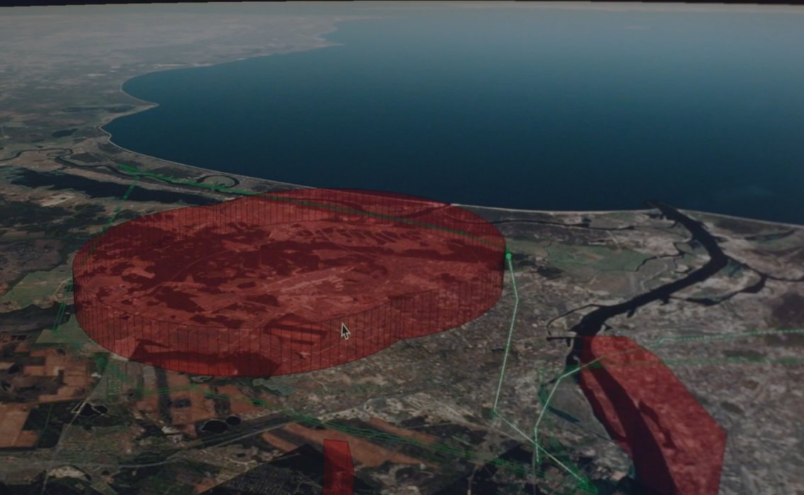
USim is already being utilized to validate and develop NASA concepts of operation for Advanced Air Mobility (AAM) operations in the United States. Partnering with Metron Aviation (an Airbus-owned company), Airbus UTM participated in NASA’s AAM National Campaign as one of seven industry partners selected for a round of airspace simulations to test an airspace management system that allows partners to safely and collaboratively manage their operations. This is an important step in informing AAM procedures and encouraging public confidence in emerging aviation markets, says Airbus UTM.
Airbus UTM has also employed USim in collaboration with EUROCONTROL to study the safety and performance of future U-Space operations in Europe, and to demonstrate the role of simulation to support U-space airspace assessment. USim has further been applied in the context of the European ATM R&D program (SESAR). For example, in the AURA project fast-time simulation exercises have served as early validation of key elements of the integration of U-Space in controlled airspace. This collaboration is happening alongside Airbus UTM research with the Johns Hopkins University Applied Physics Lab, which is exploring a critical safety gap in UTM development, and illustrating simulation’s value as a tool in UTM’s operationalization.
USim simulation
Airbus UTM’s USim provides a digital twin of each element in the UTM ecosystem. This digital twin technology allows UTM stakeholders to test individual services and verify interoperability between existing ones – all without the real-world consequences of system failures.
At its core, Usim simulates vehicles and operators, allowing researchers to explore fundamental aspects of flight operations like flight planning and impacts of navigation error and other noise on vehicle performance. However, USim also includes a set of prototype UTM services, enabling researchers to simulate more operationally relevant scenarios, applying concepts such as strategic deconfliction and measuring implications in terms of outcomes like safety, efficiency and fairness. These simulation capabilities allow researchers to explore the UTM framework that will enable future operations to take flight.
Tomorrow’s UTM will be served by a network of entities and service providers that manage traffic based on negotiation, the sharing of data, common regulations and authoritative data. The presence of these varied entities, each with its own priorities, adds an additional layer of complexity to understanding tomorrow’s UTM challenges. Simulation provides an indispensable tool to explore and assess this complexity.
Thanks to advances in computing power, researchers using USim can generate this library of data, not only testing for a wide range of variables, but doing so at scale. Running thousands of test flights in the real world would be costly and impractical, but USim can simulate thousands of flight hours quickly, allowing for thousands of operations to be simulated in a short period of time and providing statistically reliable data from which meaningful conclusions can be drawn. With advances in machine learning, researchers can also explore the properties of a trade space with greater efficiency. When stress testing a system, for example, machine learning facilitates identifying and exploring failure scenarios in simulation that would otherwise be difficult for researchers to anticipate, says Airbus UTM.
Furthermore, employing digital twin technology using a software as a service (SaaS) approach enables future stakeholders to benefit from an agile simulated environment. With SaaS access, stakeholders can be part of the development of a sustainable UTM framework and make informed decisions about the impact of regulatory requirements and developing UTM services.
So, via simulation, researchers can not only visualize an array of vehicles and operators, but stakeholders can access and test the interoperability of their systems with other stakeholders. This sophistication and collaboration leads to a better understanding of UTM infrastructure, enabling researchers and stakeholders to rely on the digital twin technology as a tool for identifying unforeseen challenges and developing an effective UTM ecosystem.
For more information visit:


